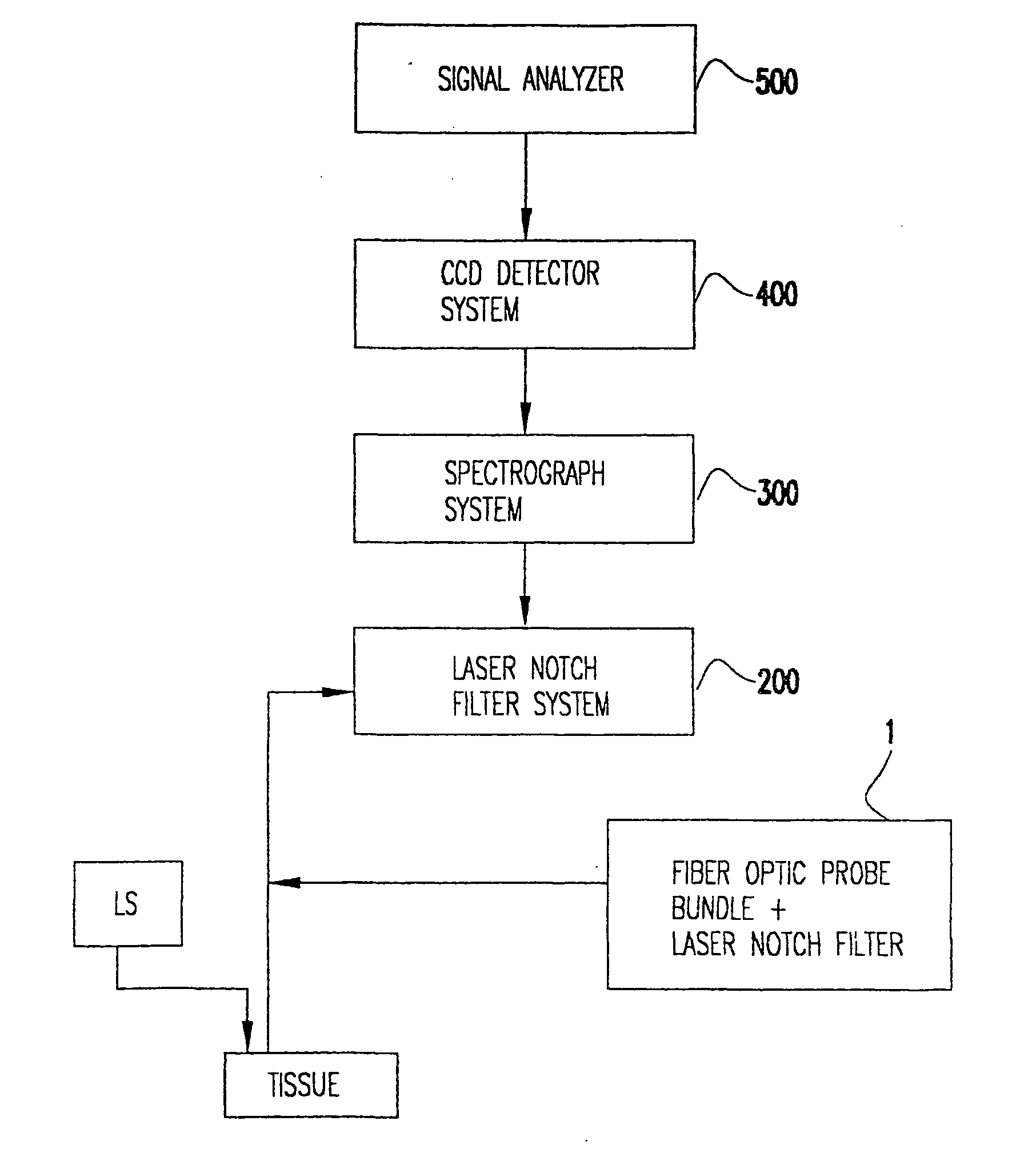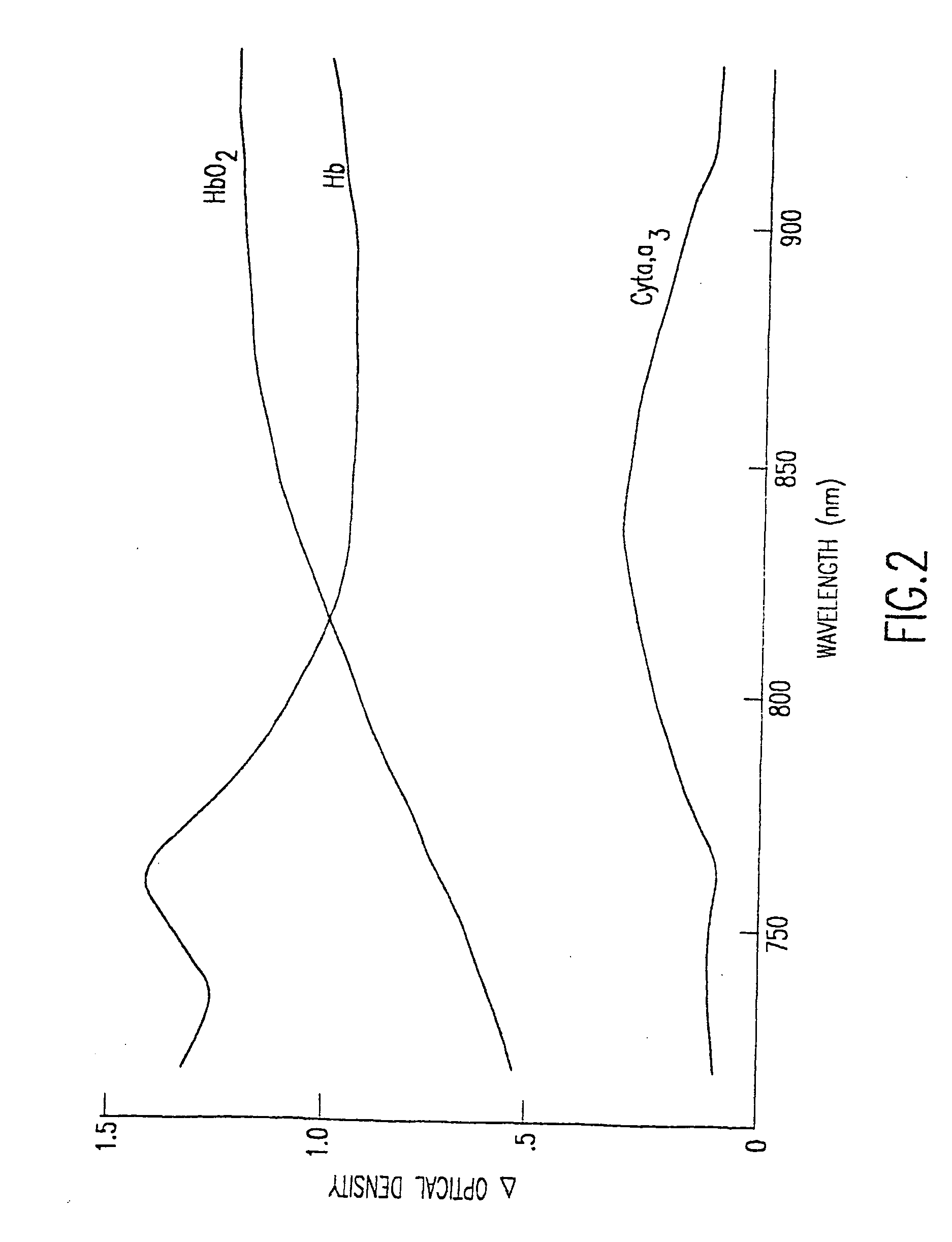Nitric-oxide detection using Raman spectroscopy
a raman spectroscopy and nitric oxide technology, applied in the field of emergency medicine, can solve the problems of relative singularity of measurement, further exacerbate, and altered organ perfusion state, and achieve the effect of accurate characterizing the condition of patients, high degree of accuracy, and accurate measuremen
- Summary
- Abstract
- Description
- Claims
- Application Information
AI Technical Summary
Benefits of technology
Problems solved by technology
Method used
Image
Examples
Embodiment Construction
[0057] The present invention provides methods and products in which resonance Raman spectroscopy interrogates biological material (such as tissue or a bodily fluid) at near-UV excitation. The Raman spectroscopy may proceed with or without simultaneous fluorescence spectroscopy (such as NADH fluorescence spectroscopy). The interrogation advantageously may be in a non-invasive to minimally-invasive manner, but is not required to be so and if desired may be invasive. Data from interrogating tissue according to the invention may be used to detect preclinical (ultra-early) states of shock and other tissue injury and disease states, determine severity, and determine the effectiveness of various treatments aimed at resolving the shock or tissue disease / injury state of a patient.
[0058] In a preferred embodiment of the invention, a tissue analysis method comprises interrogating a biological tissue with Raman spectroscopy and fluorescence spectroscopy to obtain spectroscopy results. The Rama...
PUM
| Property | Measurement | Unit |
|---|---|---|
| selectable wavelengths | aaaaa | aaaaa |
| wavelength | aaaaa | aaaaa |
| wavelengths | aaaaa | aaaaa |
Abstract
Description
Claims
Application Information
 Login to View More
Login to View More - R&D
- Intellectual Property
- Life Sciences
- Materials
- Tech Scout
- Unparalleled Data Quality
- Higher Quality Content
- 60% Fewer Hallucinations
Browse by: Latest US Patents, China's latest patents, Technical Efficacy Thesaurus, Application Domain, Technology Topic, Popular Technical Reports.
© 2025 PatSnap. All rights reserved.Legal|Privacy policy|Modern Slavery Act Transparency Statement|Sitemap|About US| Contact US: help@patsnap.com



